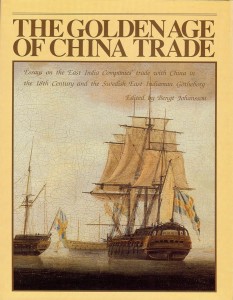The discovery of the sunken East Indiaman Götheborg outside the harbor of Gothenburg in the late 1980’s started a wave of interest in the East India trade in Sweden. Surely the wreck was not unknown since the loss in 1745 was well recorded and attempts to salvage the porcelain cargo were done around 1902-1908 but the era and its importance were mostly forgotten.
When an offer to exhibit the findings from the discovery was offered to the city of Hong Kong it was met with enthusiasm. Hong Kong’s existence was based on the East India trade and collectors and historians were interested in learning of the Swedish findings. The same was the situation in Canton and Macau. A seminar was thus arranged in Canton where Swedish, Chinese and Hong Kong experts could meet. The papers from this seminar are collected in the book The Golden Age of China Trade.
While the East India trade was of great importance for the Swedish economy because of the enormous value of the cargo, the Chinese angle is more complex. Certainly the export of porcelain and tea were of importance to its economy but China had not learnt to use imports for its economic development so the proceeds were mainly consumed. From the Opium War on, the revenues from the trade were mainly used for purchase of opium. The Swedish East India Company ceased it operations in 1807 and it never engaged in opium trade, but there is evidence that some of the crew members brought in opium in their private trade.

